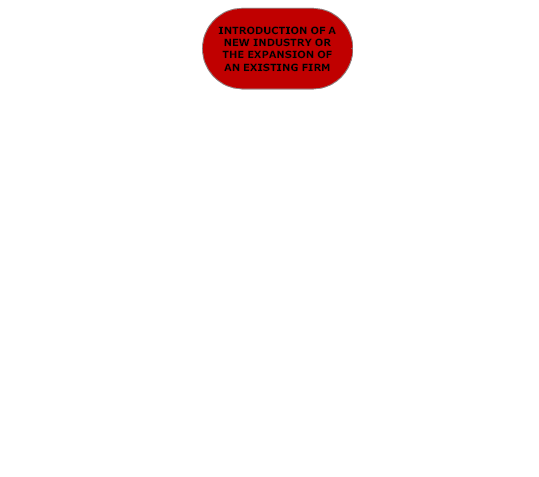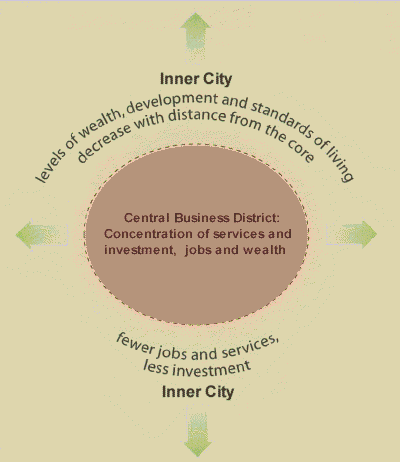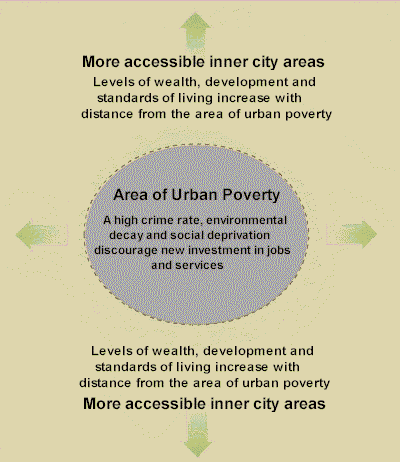Core-Periphery Model
The Core-Periphery model (see below) helps explain why some inner city areas enjoy considerable prosperity, whilst others display all the signs of urban deprivation and poverty.
Services, investment and jobs are concentrated in the core Central Business District (CBD), but accessible inner city areas may benefit from a trickle down of wealth from the core. For example, in some areas there may be a through-flow of office workers to the inner city seeking low-price lunchtime meals. The core also provides work for inner city residents.
|
Core-Periphery Model Spread Effects
The development of new industry in parts of the inner city encourage the concentration of further industrial activity via 'cumulative causation' or multiplier effect as shown in the model below:

Simplified animation to show the development of an industrial region (after Gunnar Myrdal)
Multiplier Effect (non-animated image)
Less accessible inner city areas may experience a backwash effect, with the little investment that does occur in the inner city becoming concentrated close to the CBD, widening the poverty-wealth gap. This is illustrated in the diagram below, a reversal of the core-periphery model.
|
Core-Periphery Model Reversal or Backwash


